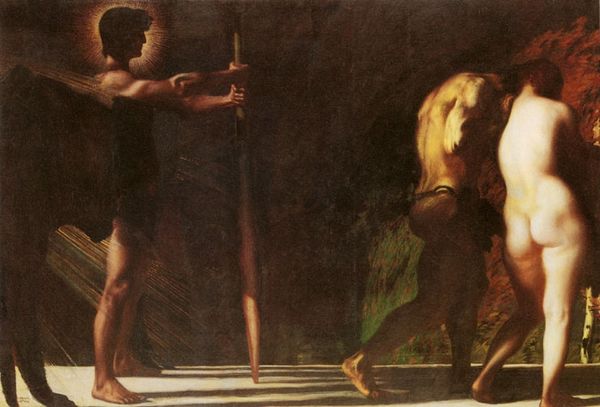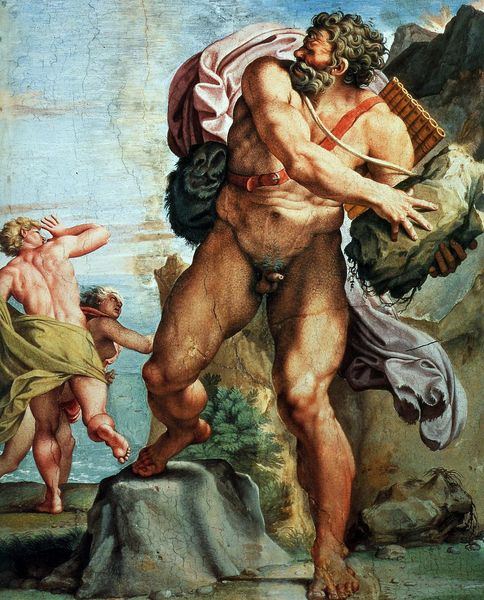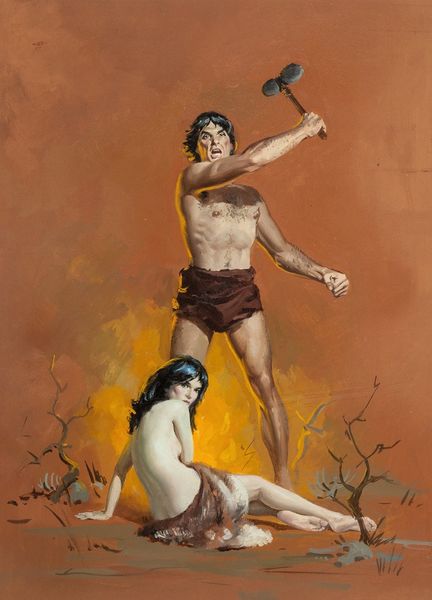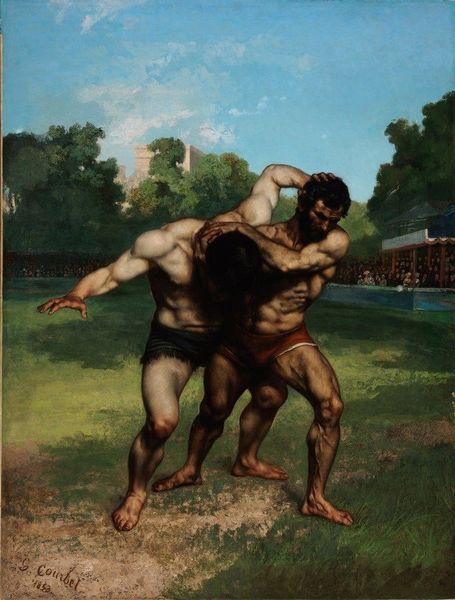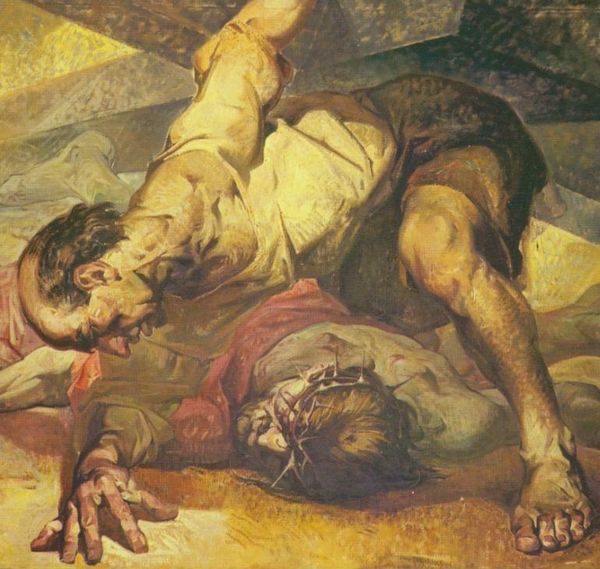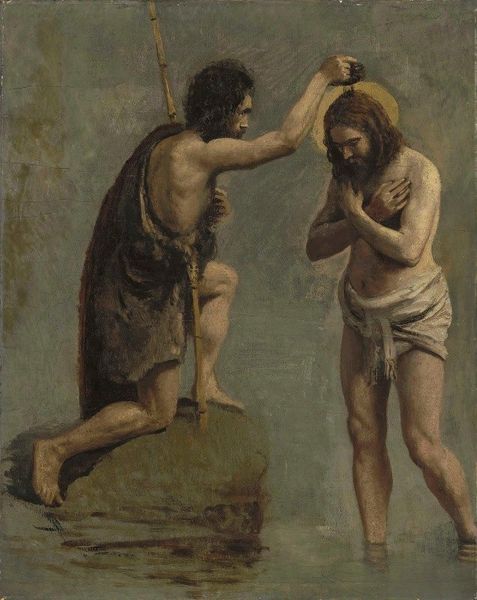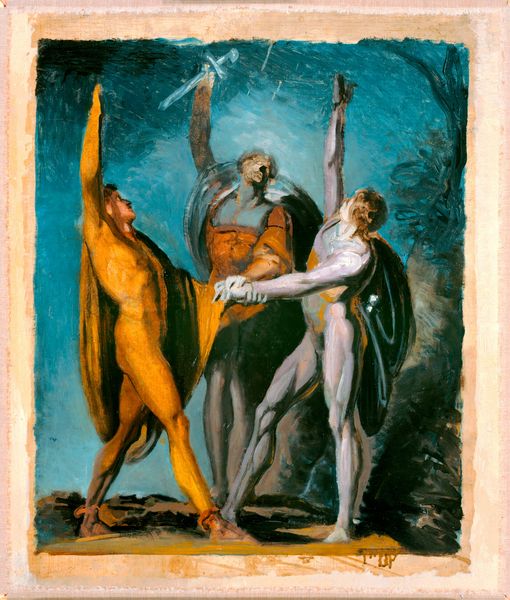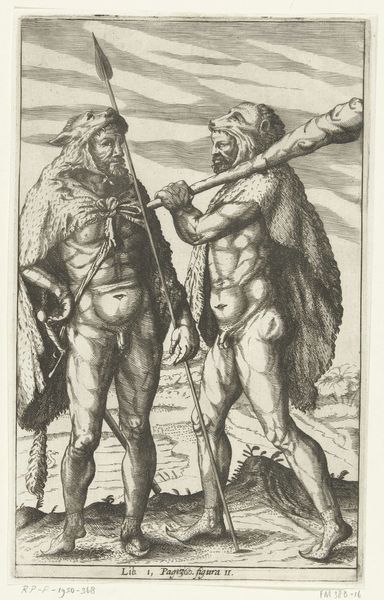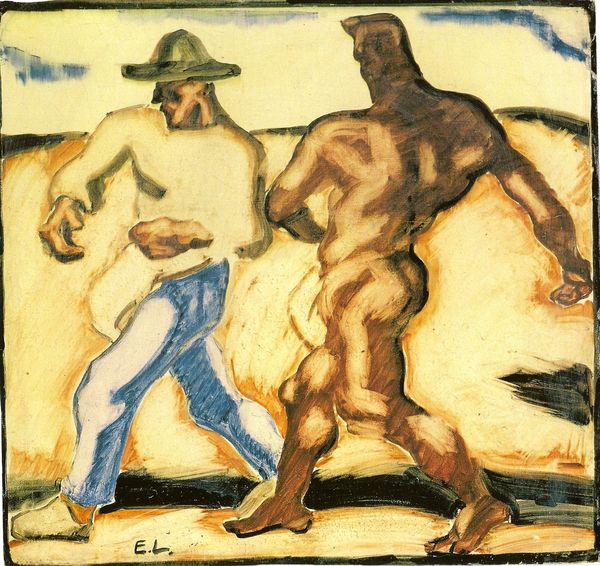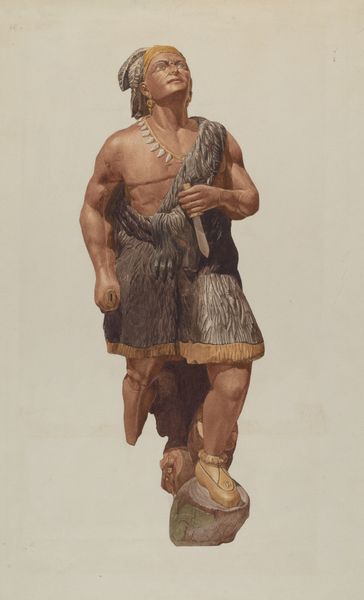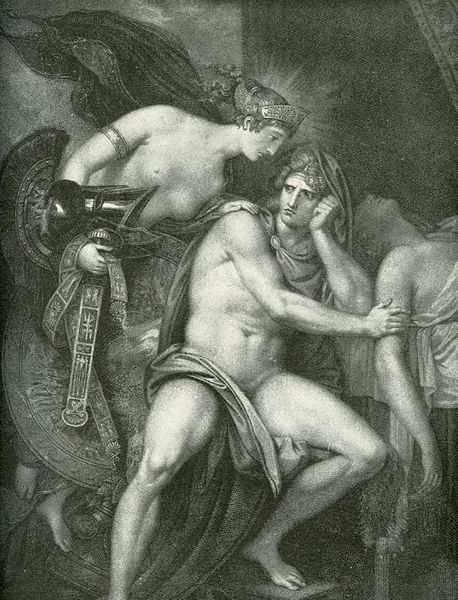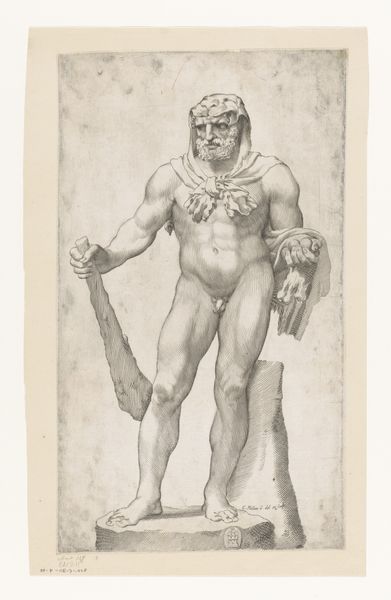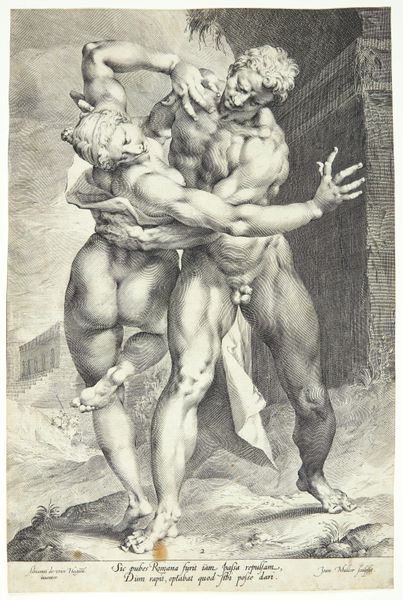
oil-paint
#
portrait
#
narrative-art
#
oil-paint
#
charcoal drawing
#
figuration
#
oil painting
#
modernism
#
erotic-art
Copyright: Arsen Savadov,Fair Use
Editor: So, this is Arsen Savadov’s "Untitled," painted in 1996 using oil paint. The stark contrast between the figures immediately grabs your attention; it feels charged and unsettling. What structural elements do you notice that contribute to that tension? Curator: Indeed. First, consider the use of chiaroscuro, the stark contrast between light and shadow. This heightens the drama, doesn’t it? Observe how the light accentuates the muscularity of both figures, drawing attention to their physical presence and the power dynamic. Editor: It does, it's hard to look away! What about the composition? Curator: Note the spatial arrangement. The figure in the tutu dominates the foreground, his back turned, presenting a barrier to the viewer. The other figure, kneeling and seemingly vulnerable, is pushed back into the pictorial space, yet his direct gaze implicates us. Savadov plays with perspective to create unease. What do you make of the artist’s brushwork? Editor: I see how the loose brushstrokes add to that feeling. They seem almost frantic, especially in the background and around the tutu, as if to suggest the instability of the situation. It also brings attention to the very act of painting itself. Curator: Precisely! The materiality of the oil paint, its texture and application, becomes an integral part of the work's meaning. Savadov isn’t just depicting a scene; he's creating a visceral experience through formal means. We are drawn into this disturbing dynamic via light, form, and the gestural quality of the brushwork itself. It is through those aesthetic considerations, not through symbolism, that the picture’s significance arises. Editor: That really reframes my understanding! Seeing how the painting's structure communicates as much as the subject is eye-opening. Curator: Yes, sometimes, a concentration on color, line, form, and composition helps us to really perceive an image and gain greater insights into both art and life.
Comments
No comments
Be the first to comment and join the conversation on the ultimate creative platform.
